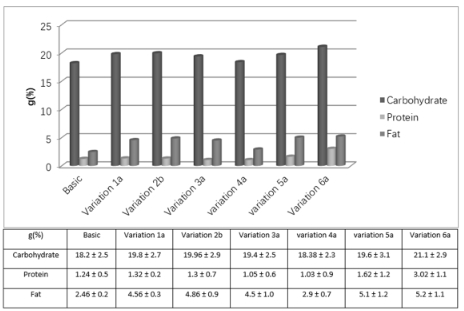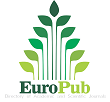Unused portions of vegetables can void malnutrition: Production, acceptability, and nutritional analysis
DOI:
https://doi.org/10.18686/fnc.v1i2.74Keywords:
malnutrition; micronutrient deficiency; phenolic compound; antioxidant propertyAbstract
Nutritional deficiency is a serious public health concern in many developing nations due to the high cost of food for those in lower socioeconomic classes. 1.3 billion tons of food are reportedly lost or wasted annually, beginning in the production phase and continuing into the consumer sector. Yet, worldwide, malnutrition-related problems claim the lives of 75% of youngsters. In Asia, including India, cauliflower, turnips, radishes, and peas are frequently consumed and grown in enormous amounts. However, the leaves and pods of these vegetables are normally discarded. They include large macronutrients, vitamins, minerals, and antioxidant-rich phenolic chemicals. In this study, unwanted vegetable parts—primarily leaves and pods—typically thrown away in trash cans were repurposed to create a product that can help the low-socioeconomic population overcome nutritional deficiencies. Many product varieties were made using unused turnips, radish, peas, and cauliflower leaves. The items with the best acceptability were those that were high in calcium, iron, vitamin A, vitamin C, phenol, and antioxidants. Therefore, it can be stated that the product, which was created utilizing an abandoned vegetable portion (leaves and pods), is nutrient-dense, affordable, and capable of addressing nutritional inadequacies.

Downloads
Published
How to Cite
Issue
Section
License
Copyright (c) 2023 Manika Das, Banhishikha Roy

This work is licensed under a Creative Commons Attribution-NonCommercial 4.0 International License.
References
1. Islam MR, Paul DK, Shaha RK. Nutritional importance of some leafy vegetables available in Bangladesh. Pakistan Journal of Biological Sciences 2004; 7(8): 1380–1383. doi: 10.3923/pjbs.2004.1380.1384
2. Pritwani R, Mathur P. β-carotene content of some commonly consumed vegetables and fruits available in Delhi, India. Journal of Nutrition & Food Sciences 2017; 7(5): 1–7. doi: 10.4172/2155-9600.1000625
3. Salina NSM, Singh A, Raghavan V. Potential utilization of fruit and vegetable wastes for food through drying or extraction techniques. Novel Techniques in Nutrition and Food Science 2017; 1(2): 1–12. doi: 10.31031/NTNF.2017.01.000506
4. Upasana VD. Nutritional evaluation of pea peel and pea peel extracted byproducts. International Journal of Food Science and Nutrition 2018; 3(1): 65–67.
5. Sadhna S, Anjali Y, Sony A. Nutritional evaluation and sensory characteristics of products developed from waste leaves of cauliflower. International Journal of Current Microbiology and Applied Sciences 2018; 7: 4782–4790.
6. Sharmilan PMJ, Jaganathan D. Bioactive compounds in cauliflower leaves (brassica oleracea var. botrytis) using GCMS. International Journal of Recent Scientific Research 2016; 7(4): 10459–10463.
7. Pankar SA, Bornare DT. Studies on cauliflower leaves powder and its waste utilization in traditional product. International Journal of Agricultural Engineering 2018; 11(Sp. Issue): 95–98. doi: 10.15740/HAS/IJAE/11
8. Ribeiro TC, Abreu JP, Freitas MCJ, et al. Substitution of wheat flour with cauliflower flour in bakery products: Effects on chemical, physical, antioxidant properties and sensory analyses. International Food Research Journal 2015; 22(2): 532–538.
9. El-din MME. The protective effect of turnip leaves against oxidative stress induced by high cholesterol diet in adult rats. World Applied Sciences Journal 2012; 20(1): 154–163. doi: 10.5829/idosi.wasj.2012.20.01.2821
10. Gamba M, Asllanaj E, Raguindin PF, et al. Nutritional and phytochemical characterization of radish (Raphanus sativus): A systematic review. Trends in Food Science & Technology 2021; 113: 205–218. doi: 10.1016/j.tifs.2021.04.045
11. Kumari T, Deka SC. Potential health benefits of garden pea seeds and pods: A review. Legume Science 2021; 3(2): e82. doi: 10.1002/leg3.82
12. Nasir G, Zaidi S, Tabassum N, Asfaq. A review on nutritional composition, health benefits and potential applications of by-products from pea processing. Biomass Conversion and Biorefinery 2022. doi: 10.1007/s13399-022-03324-0
13. Layne E. Spectrophotometric and turbidimetric methods for measuring proteins. In: Colowick PS, Kaplan NO (editors). Methods in Enzymology. Academic Press; 1957. pp. 447–455.
14. Nielsen SS. Introduction to chemical analysis of food. In: Food Analysis Laboratory Manual, 4th ed. Springer; 2010. pp. 183–191.
15. Ludwig TG, Goldberg HJV. The anthrone method for the determination of carbohydrates in foods and in oral rinsing. Journal of Dental Research. 1956; 35(1): 90–94. doi: 10.1177/00220345560350012301
16. Nielsen SS. Vitamin C determination by indophenol method. In: Food Analysis Laboratory Manual, 4th ed. Springer; 2010. pp. 55–60.
17. Karnjanawipagul P, Nittayanuntawech W, Rojsanga P, Suntornsuk L. Analysis of β-carotene in carrot by spectrophotometry. Mahidol University Journal of Pharmaceutical Science 2010; 37(1–2): 8–16.
18. Kenari RE, Mohsenzadeh F, Amiri ZR. Antioxidant activity and total phenolic compounds of Dezful sesame cake extracts obtained by classical and ultrasound-assisted extraction methods. Food Science & Nutrition 2014; 2(4): 426–435. doi: 10.1002/fsn3.118
19. Shirwaikar A, Shirwaikar A, Rajendran K, Punitha ISR. In vitro antioxidant studies on the benzyl tetra isoquinoline alkaloid berberine. Biological and Pharmaceutical Bulletin 2006; 29(9): 1906–1910. doi: 10.1248/bpb.29.1906
20. Shridhar G, Rajendra N, Murigendra H, et al. Modern diet and its impact on human health. Journal of Nutrition & Food Science 2015; 5(6): 430. doi: 10.4172/2155-9600.1000430
21. Pandey KB, Rizvi SI. Plant polyphenols as dietary antioxidants in human health and disease. Oxidative Medicine and Cellular Longevity 2009; 2(5): 270–278. doi: 10.4161/oxim.2.5.9498
22. Padayatty SJ, Katz A, Wang Y, et al. Vitamin C as an antioxidant: Evaluation of its role in disease prevention. Journal of the American College of Nutrition 2003; 22(1): 18–35. doi: 10.1080/07315724.2003.10719272
23. Pizzino G, Irrera N, Cucinotta M, et al. Oxidative Stress: Harms and benefits for human health. Oxidative Medicine and Cellular Longevity 2017; 2017: 8416763. doi: 10.1155/2017/8416763
24. Manach C, Scalbert A, Morand C, et al. Polyphenols: Food sources and bioavailability. The American Journal of Clinical Nutrition 2004; 79(5): 727–747. doi: 10.1093/ajcn/79.5.727




.jpg)
.jpg)

